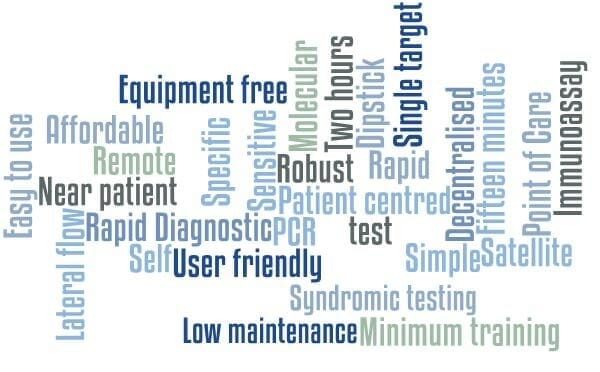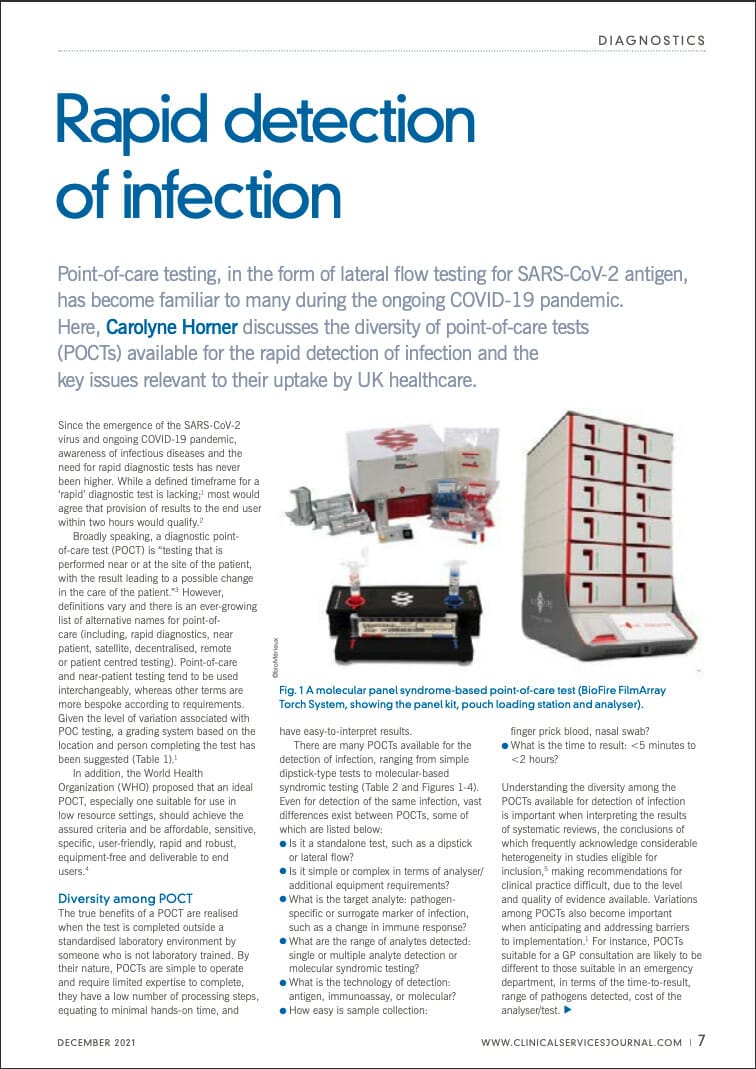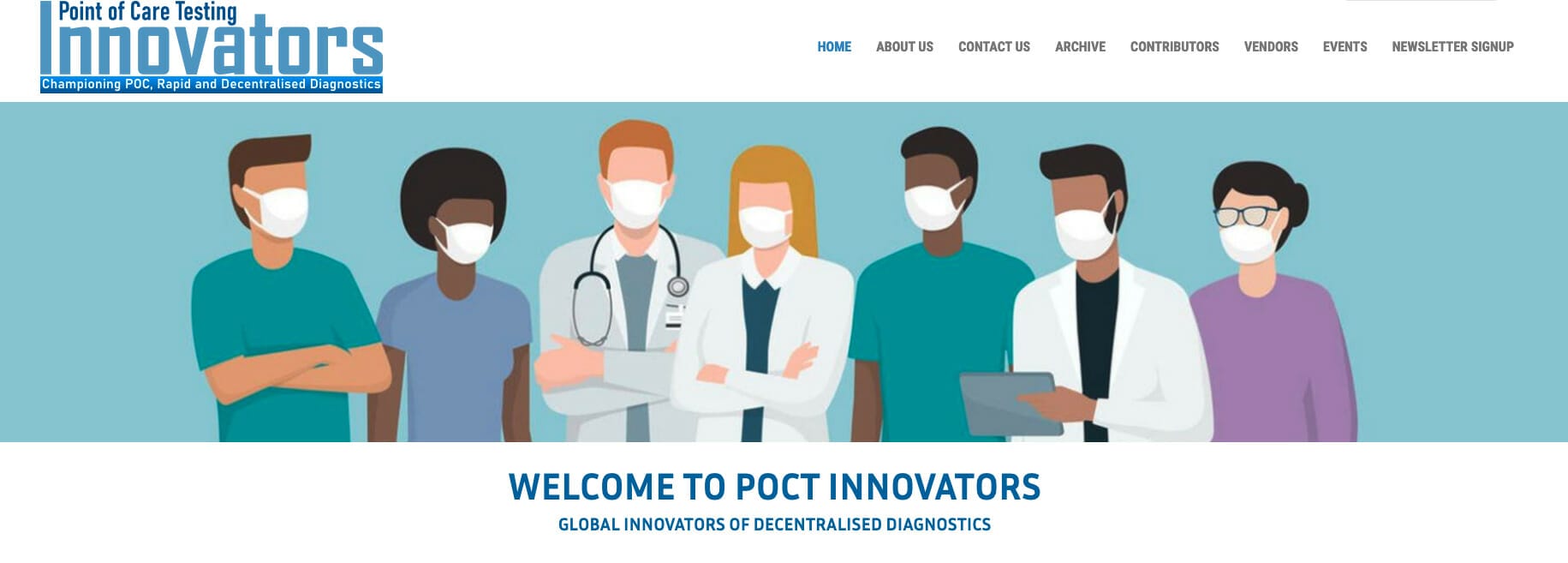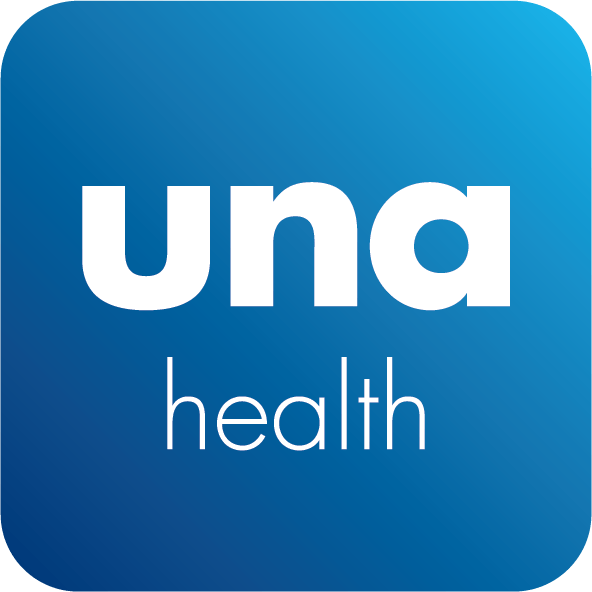
What exactly is Point-of-Care Testing?
Point-of-care, near-patient, bedside, decentralised, patient-centred, over-the-counter (OTC), self- or home testing are words and phrases that may be used when talking about point-of-care testing; they are often used interchangeably and without a clear definition.
This post attempts to explain some of the nuances of point-of-care testing with respect to diagnosis of infection.
Potato, potahto? Tomato, tomahto?
If you were to ask five different people in different healthcare roles for a definition of point-of-care testing, you are likely to receive five different answers according to who they are and where they work.
One definition of point-of-care testing from the International Organisation for Standardization (ISO), is “testing that is performed near or at the site of the patient, with the result leading to a possible change in the care of the patient” (ISO 22870:2016).
Another definition, from the UK Health Security Agency (UKHSA),includes an extra layer of detail about how far away from the patient testing is completed, who completes the testing, and how long until results are ready: “A point-of-care test is a medical diagnostic test, performed at or near the site of patient care (platforms with the potential to be used within 20 metres of patients), undertaken and operated by a wide range of staff, including those without a laboratory background. It is a test to support clinical decision making, to help the physician to decide upon the best management options, and for which the results can be available in real time, usually in less than 90 minutes.”
Features of a point-of-care test
There is a variety of point-of-care tests available for the diagnosis of infection, ranging from urine dipstick-type tests, to cassette-based lateral flow tests, to analyser-based tests (Box 1).

Despite this diversity, point-of-care tests typically have the following characteristics in common:
- Easy, patient-friendly sample collection, such as a finger prick blood or nasal swab
- Simple to use, with a minimal number of steps to complete the test
- No additional equipment requirements, everything contained within the test box
- Easy to follow instructions with minimal training requirements
- Reliable and robust
In essence, not sending a sample to be tested in a laboratory at a distant location means that results are more likely to be available in a timely manner, be that 5 minutes if a patient is waiting with you in a time-limited appointment, 30 minutes if other clinical work-up is required, or 2 hours if the patient is on a hospital ward.
A word of caution; not all point-of-care tests are created equal. Sensitivity and specificity of a test are very important performance characteristics but these values may not necessarily have been well assessed or reported.
Location, location, location
Point-of-care testing has a broad meaning according to at least two factors:
- the location in which the testing is done (e.g., GP surgery, hospital ward, care home, pharmacy, at home)
- the person completing the test (e.g., the patient themselves, alone or under supervision; a healthcare professional without specialist training, or a fully trained individual)
For instance, point-of-care tests suitable for a GP consultation are likely to be different to those used by hospital wards, such as the emergency department or intensive care unit, in terms of the time to result, range of pathogens detected, and cost of the test.
Here is a small selection of examples that may help explain the subtle differences in terminology used:
| Situation | Explanation |
| An otherwise healthy adult with symptoms of an acute upper respiratory tract infection Test example: a COVID-19 antigen lateral flow kit | Lateral flow tests are one of the simplest types of test to complete, with minimal training required and all of the necessary components available in the kit. As the patient wouldn’t necessarily be receiving care at home, self-testing or home-testing may be used to describe this type of test. |
| An elderly resident who is at home in bed with an exacerbation of chronic obstructive pulmonary disorder (COPD) Test example: Aidian QuikRead® go easy CRP test | A healthcare professional could be visiting the patient and taking the portable QuikRead go analyser with them. The test could be completed at the bedside. The result would be available in <2 minutes, which is very rapid compared with sending a blood tube to the laboratory. Bedside or near-patient testing could describe this testing situation. |
| A mother worried about her 3-year old child with a sore throat who goes to the pharmacy Test example: Aidian QuikRead® go Strep A test | The QuikRead go analyser is suitable for use in a pharmacy but using the term ‘bedside testing’ in this instance would be somewhat of a misnomer; the patient is unlikely to be in bed if they can visit a pharmacy! Either near-patient or point-of-care could be used here. |
| Molecular testing using an analyser that is able to detect a wide range of respiratory pathogens that is situated on a hospital ward Test example: BioFire® FilmArray® | A sample is taken from the patient and testing is completed on the ward rather than sending the sample to centralised laboratory facilities. The testing wouldn’t be bedside testing per se, as the machine that does the testing will be large and will be situated in a safe space on the ward rather than next to the patient’s bed. Near-patient or rapid diagnostic testing could describe this scenario. |
Like to find out more?
Whatever you choose to call them, I think point-of-care testing options are here to stay!
A longer piece entitled: “Point-of-care diagnostics: ensuring rapid detection of infection” was published by the Clinical Services Journal, in December 2021 and considers the diversity of point-of-care tests available for the rapid detection of infection in more detail.

See the full article here: Point-of-care diagnostics: ensuring rapid detection of infection

POCT Innovators is an open access, free to subscribe website and aims to be “a resource for healthcare professionals, diagnostics companies and key opinion leaders to share information related to the field of point of care, rapid and decentralised diagnostics.” New content is available every week.
